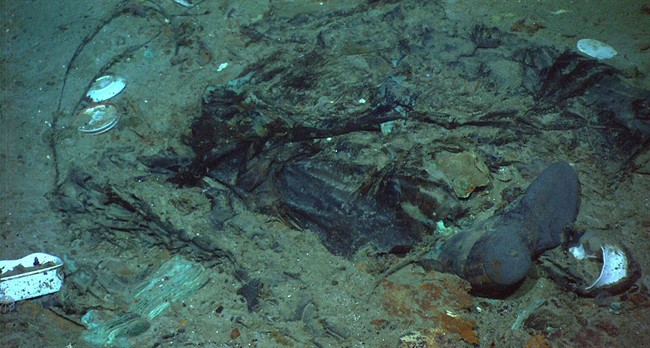US officials: Photos support case that human remains are in mud at Titanic shipwreck site
Advertisement
Read this article for free:
or
Already have an account? Log in here »
To continue reading, please subscribe:
Monthly Digital Subscription
$1 per week for 24 weeks*
- Enjoy unlimited reading on winnipegfreepress.com
- Read the E-Edition, our digital replica newspaper
- Access News Break, our award-winning app
- Play interactive puzzles
*Billed as $4.00 plus GST every four weeks. After 24 weeks, price increases to the regular rate of $19.00 plus GST every four weeks. Offer available to new and qualified returning subscribers only. Cancel any time.
Monthly Digital Subscription
$4.75/week*
- Enjoy unlimited reading on winnipegfreepress.com
- Read the E-Edition, our digital replica newspaper
- Access News Break, our award-winning app
- Play interactive puzzles
*Billed as $19 plus GST every four weeks. Cancel any time.
To continue reading, please subscribe:
Add Free Press access to your Brandon Sun subscription for only an additional
$1 for the first 4 weeks*
*Your next subscription payment will increase by $1.00 and you will be charged $16.99 plus GST for four weeks. After four weeks, your payment will increase to $23.99 plus GST every four weeks.
Read unlimited articles for free today:
or
Already have an account? Log in here »
Hey there, time traveller!
This article was published 14/04/2012 (4936 days ago), so information in it may no longer be current.
NEW YORK, N.Y. – A U.S. official says there may be human remains embedded in the mud of the North Atlantic where the New York-bound Titanic came to rest when it sank 100 years ago.
The director of maritime heritage at the National Oceanic and Atmosphere Administration says forensic evidence indicates signs of human remains at the shipwreck site.
James Delgado said Saturday that one 2004 photograph shows a coat and boots in the mud. He says the way they are “laid out” makes a “compelling case” that it is where “someone has come to rest.”

He released the full image this week to coincide with the disaster’s centenary. It was previously seen in a cropped version.
They were taken during a NOAA expedition.
The luxury liner went down April 14, 1912, after striking an iceberg.

